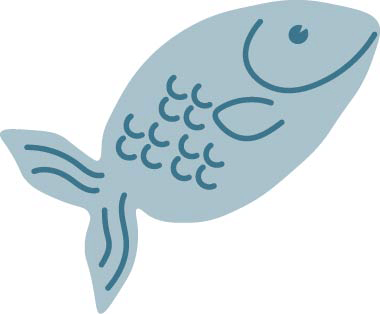Editor’s note
You can read this publication on this page or download the PDF.
See the companion publication N1020, The Facts on Fat Poster.

This handout explains how much dietary fat is recommended daily and provides a list of foods with healthy fats. It also discusses saturated fat and provides tips on limiting it.
The printed version is a two-page 8.5-by-11 inch handout.
See handout content below.
The Facts on Fat
How much fat is recommended?
Adults should get 20–35% of their calories from fat. That would be 44–78 grams of total fat for an average 2,000 calorie diet.
Saturated fat should be less than 10% of total calories, or 22 grams. Choose the remaining 22–56 grams of fat from the foods listed below.
Get healthy fats from

Fish
Choose to have eight ounces of fatty fish such as tuna, herring, lake trout, mackerel or salmon per week.
Nuts
Choose one ounce of almonds (24), walnuts (14 halves), hazelnuts (12), peanuts (35), peanut butter (2 tablespoons), or ¼ cup of pumpkin or sunflower seeds as a snack.
Avocado
They have a high amount of healthy fat and as a bonus are also high in fiber.
Oils
Choose canola, corn, olive, peanut, safflower, sunflower or soybean oil for dressings and sauteing.
Limit saturated fat
Saturated fat may increase cholesterol and increase the risk for heart disease.
What is saturated fat?
- Saturated fats are often referred to as solid fats because they are solid at room temperature.
- Examples include fat in animal products such as meat, milk and butter.
- Coconut and palm oils are vegetable oils that are mostly saturated fat.

Check the label
Just because a food is marketed as “low-fat” or “reduced-fat,” it doesn’t always mean it’s a healthier choice, especially in packaged foods. Check the food label and compare the calories, saturated fat, and added sugar when deciding between two products.
Ways to decrease saturated fat
- Eat fewer and smaller portions of desserts and sweet snacks.
- Choose foods lower in saturated fat.
- Choose fat-free milk.
- Drain excess grease after browning ground meat.
Funded in part by USDA SNAP.
For more information, call MU Extension’s Show Me Nutrition line at 1-888-515-0016.
Need help stretching your food dollars? Contact your local resource center or go online to mydss.mo.gov/food-assistance/food-stamp-program.